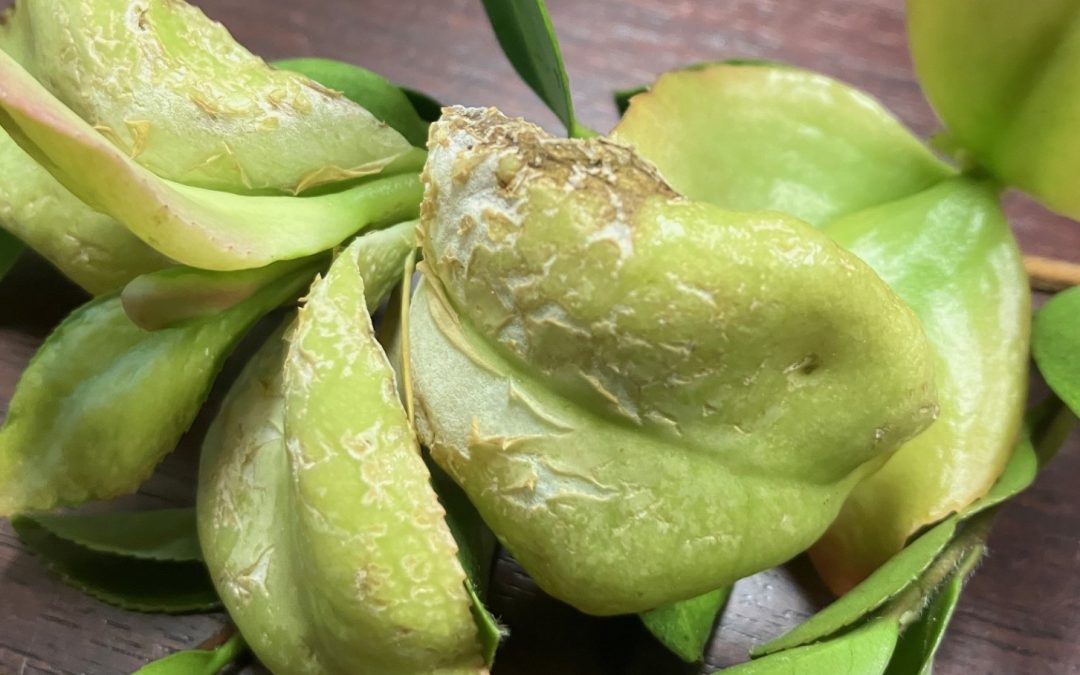
by Sheila Dunning | Apr 25, 2024
Extended spring weather with cool nights and frequent rain can be enjoyable for humans, but does strange things to plants, especially if dormant fungi are hanging around. Exobasidium vaccinii is a fungus that is believed to overwinter as spores attached to bark and bud scales. It can cause infection with the opening of buds in spring, creating odd shaped leaves and flowers that are referred to as galls. Infection is dependent on high humidity and moisture during bud break. Gall growth is due to plant cell division resulting from the stimulus of hyphal growth within host tissue. When galls are still soft, the fungus grows between epidermal cells, breaks the cuticle, and sporulates giving the gall a white cast. Either all or part of a leaf may become thickened, fleshy, and covered with a white bloom of spores. At first, diseased leaves are succulent and white, but they later shrink into hard, brown, gall-like bodies. Galls are composed of fungus-infected plant tissue. Older leaves are resistant to infection. Exobasidium vaccinii is most common in azaleas and camellias.
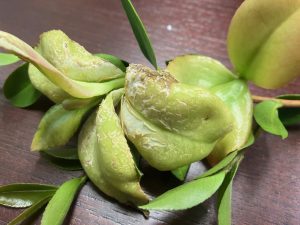
Photo by Sheila Dunning
But, other Exobasidium species are floating out there, and with just the right conditions they can deform other plants. That’s what caused this odd formation on one flower of a gardenia plant. In this case, the spores fused the sepals to the petals of the flower.
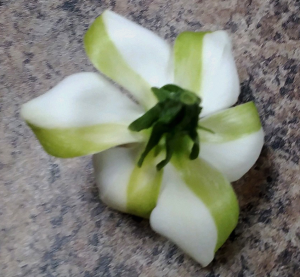
Photo by Margaret Stewart
While chemical controls are available, they would need to begin before symptoms appear and continue until the gall dried completely. It may be an option for the fastidious weather watcher with a good working knowledge of this disease. But, for the rest of the population, removing and destroying galls before they turn white is the best management practice to avoid having spores form and hang around until next spring. Proper pruning of the plants to improve air circulation will also reduce the chances of favorable conditions, should there be an extended cool, wet season next year.
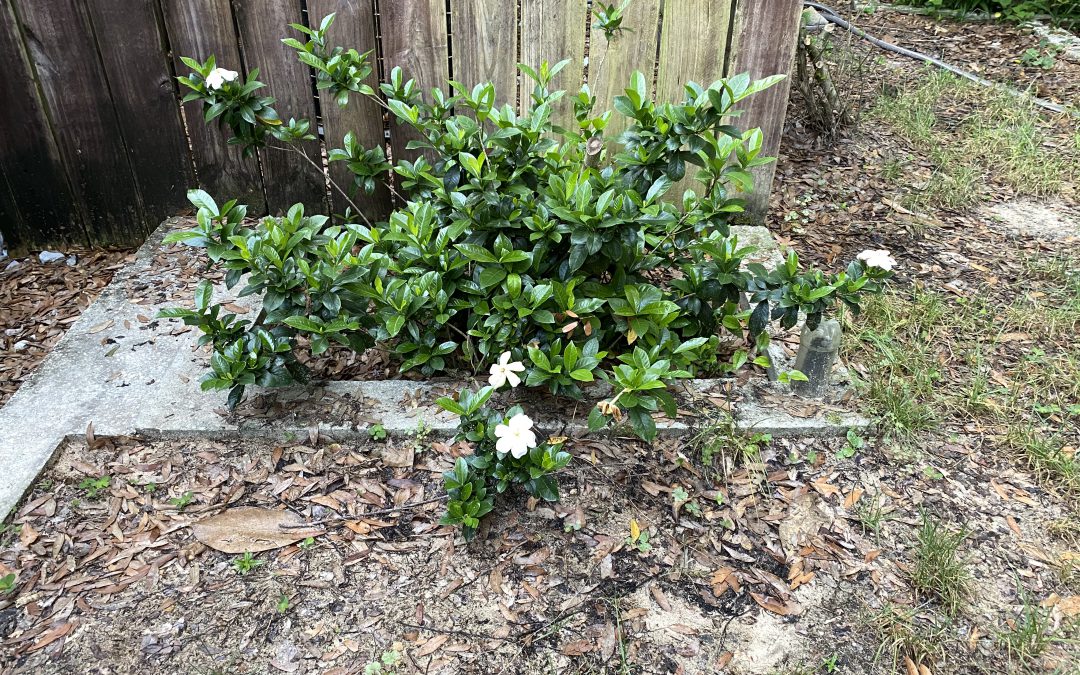
by Matt Lollar | Jun 23, 2020
I live in the woods, so I mainly have a “natural” landscape. I remove trees, shrubs, and weeds as I see fit, but for the most part things just grow wild. However, there are a few spots in the yard where the previous owners did a little landscaping. Unfortunately, these spots have become a bit overgrown. One spot in particular features some gardenia plants around the HVAC units. At first, I was a little hesitant to prune these shrubs because they provide some shade to the units. However, they have become overgrown and I know they will grow back. I was patient to wait for them to finish flowering.

A gardenia shrub that has become a bit overgrown. Photo Credit: Matt Lollar, University of Florida/IFAS Extension – Santa Rosa County
As you can see in the photo above, this gardenia has become a bit leggy. It is important to also note the good amount of branching and new growth at the base of the plant. There are a few pruning options available for shaping shrubs such as hedging/terminal pruning, selective pruning, and renewal pruning. While a tree form gardenia can be attractive, it wasn’t desired in this situation. This particular case called for renewal pruning to improve the form of the plant. Renewal pruning is probably the easiest type of pruning, because it requires the least amount of thinking. It basically involves removing the majority of old growth.
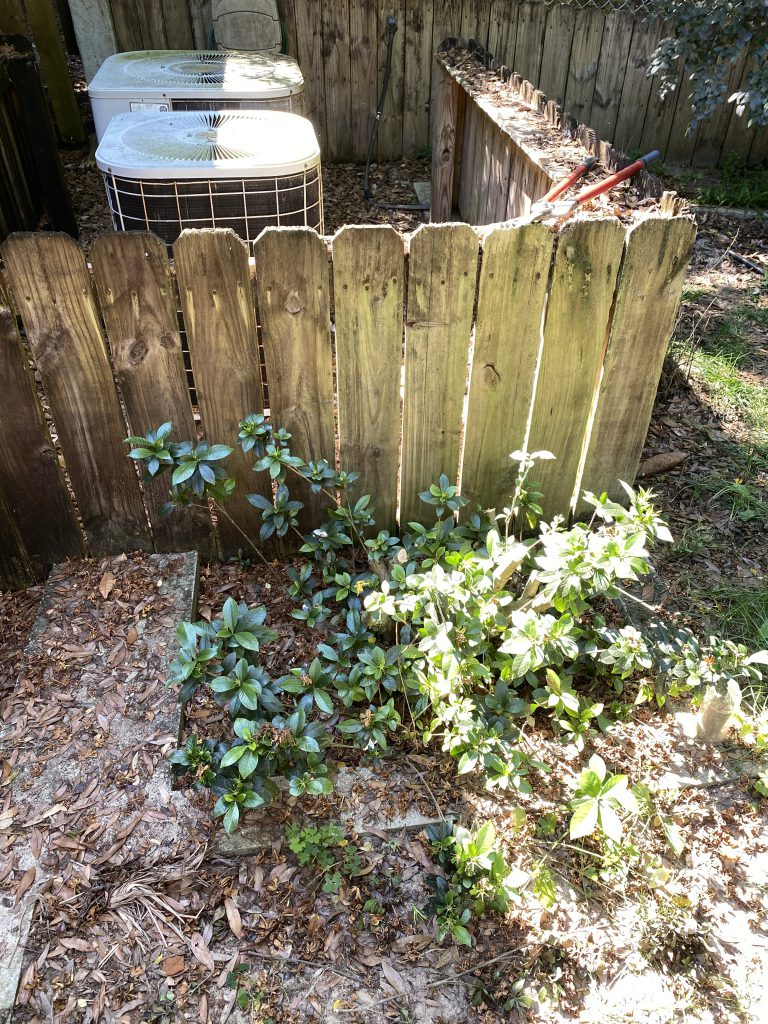
A gardenia shrub that has been renewal pruned. Photo Credit: Matt Lollar, University of Florida/IFAS Extension – Santa Rosa County
The picture above is of the same shrub that has been pruned heavily. Not only have the older, leggy branches been removed, but some of the newer growth has been removed to allow for better air circulation within the shrub. This will help reduce the incidence of disease.
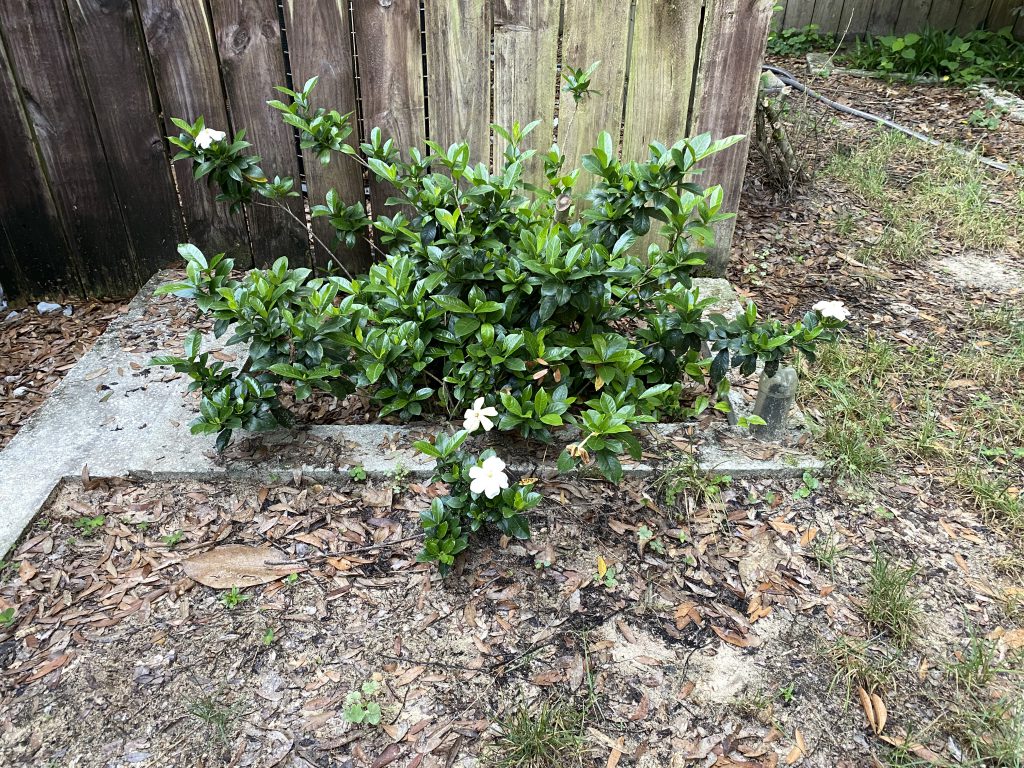
A gardenia shrub six weeks after renewal pruning. Photo Credit: Matt Lollar, University of Florida/IFAS Extension – Santa Rosa County
Six weeks after being pruned, this shrub is flowering for a second time. In a matter of short time it will be providing much needed shade for the HVAC units again. (That is..if I remember to selectively prune throughout the year.) For more information on how to prune and what to prune, please visit the UF/IFAS Gardening Solutions page on pruning.
by Matthew Orwat | Sep 9, 2015

Azaleas pruned late in the fall will have little or no bloom in the spring. Image Credit: Matthew Orwat
As fall approaches, our spring blooming shrubs such as gardenia, spirea and azalea begin to look unkempt and overgrown. That means it is time to give them a severe pruning to get them ready for winter, right? Not so fast, take a minute to understand the growth habit of each species before diving in with the pruning shears.
Azalea:
Many do not understand that annual spring azalea bloom could be sacrificed completely by pruning spring blooming azaleas at the wrong time.
Pruning traditional azaleas in the fall will result in a loss of spring bloom the following year because most bloom on previous years’ wood. This means that they flower on growth put on throughout the previous growing season. If a gardener removes the previous season’s new growth, they are removing the blooms as well.
So, when is the proper time to prune azaleas? The ideal time to prune is directly after the spring bloom. This will give the plant enough time to generate abundant new growth, thus maximizing bloom next spring.
Even the developers of the Encore Azalea, a new repeat blooming type, recommend pruning as soon after the spring bloom as possible to maximize bloom set for the following year.
For more information on pruning azaleas or on general azalea culture, please read the UF / IFAS publication Azaleas at a Glance or check out the Pruning Azalea page on Gardening in a Minute.
Gardenia:
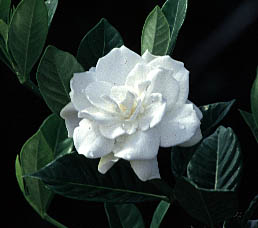
Gardenia, Image Credit Dan Culbert.
Gardenias don’t need much pruning except to remove any dead or non-productive wood, to help them remain bushy, and to remain the same size as other plants in the landscape. Choose a cultivar that will mimic the size of other shrubs, not one too large for the area. Pruning should be done as soon after the summer bloom as possible. Pruning after the beginning of fall will reduce the next year’s bloom production. Know your cultivar. Some cultivars of gardenia flower on new wood as well as old, while some flower on old wood only.
Spiraea:
Regarding spiraea, prune after the bloom as needed. The closer to the late summer or autumn, the greater negative effect pruning will have on bloom quality since spirea set their bloom in early autumn.
I hope this article prevented a few pruning disasters as well as started a thinking process for the act of pruning your landscape plants.









